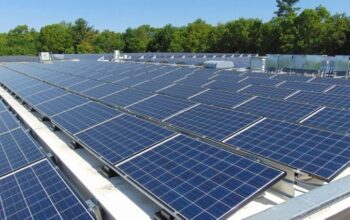By Staff Reporter
ISLAMABAD: Pakistan’s economy is showing tentative signs of stabilisation and recovery as reforms under an International Monetary Fund (IMF) program begin to curb inflation and revive growth, though structural challenges and global trade risks persist, the Asian Development Bank (ADB) said on Wednesday.
The country’s GDP is forecast to expand 2.5 percent in the fiscal year ending June 2025, unchanged from FY2024, before rising to 3.0 percent in FY2026, according to the ADB’s Asian Development Outlook April 2025.
The Manila-based lender credited Pakistan’s adherence to $7 billion IMF’s Extended Fund Facility launched in October 2024 for easing fiscal imbalances and stabilizing its currency, but warned that sustained reform implementation remains “critical” to shield the $340 billion economy from external shocks.
The IMF and Pakistan have agreed on a staff-level deal for the first review of EFF last month and a new $1.3 billion Resilience and Sustainability Facility (RSF).
The agreement, subject to IMF Executive Board approval, unlocks $1 billion under the EFF, bringing total disbursements to $2 billion, and provides $1.3 billion over 28 months under the RSF, after the country implemented painful reforms, such as raising energy tariffs and taxes, to meet the lender’s conditions.
“Pakistan’s economy has benefitted from improved macroeconomic stability through robust reform implementation in areas such as tax policy and energy sector viability,” said ADB Country Director for Pakistan Emma Fan. “Growth is projected to persist in 2025 and to increase in 2026. Sustained implementation of policy reforms is vital to buttress this growth trajectory and fortify fiscal and external buffers.”
A rebound in private investment, supported by progress on tax reforms and energy sector restructuring, is expected to drive growth in FY2025. Industrial and services activity will likely benefit from monetary easing—the central bank has cut rates by 600 basis points since mid-2024—and improved foreign exchange liquidity.
Inflation is projected to drop sharply to 6.0 percent in FY2025 from 12.0% in FY2024, aided by moderating food prices, stable global oil markets, and subdued demand.
“That’s being driven by continued moderation in food inflation, stable global oil and commodity prices, moderate domestic demand conditions, and a favorable base effect.”
In FY2025, growth is expected to be driven by a rebound in private sector investment linked to progress on reform measures, perceptions of greater economic stability, and a stable foreign exchange market,” the ADB said in a statement.
“The successful implementation of the reform program is anticipated to continue creating a more stable macroeconomic environment and gradually remove structural barriers to growth.”
The bank said economic activity in both the industrial and service sectors will benefit from recent monetary easing and macroeconomic stability. Additionally, strong remittance inflows, lower inflation, and monetary easing are likely to support aggregate demand.
However, the ADB highlighted Pakistan’s chronically low female labor force participation (22%) as a drag on long-term growth, urging expanded access to education, vocational training, and safer transit options to unlock productivity gains.
“Continued investment in girls’ education and vocational training programs that equip women with the skills needed for the job market, while improving public transport and ensuring safe travel options, can reduce barriers for women entering the labor market.”
The ADB’s projections do not factor in potential impacts from new U.S. tariffs announced April 2, though its report warns that broader protectionist measures could disrupt regional trade. Pakistan’s reliance on external financing also leaves it vulnerable to shifts in global risk sentiment, particularly as it navigates $100 billion in external debt repayments in next four years.
Copyright © 2021 Independent Pakistan | All rights reserved




